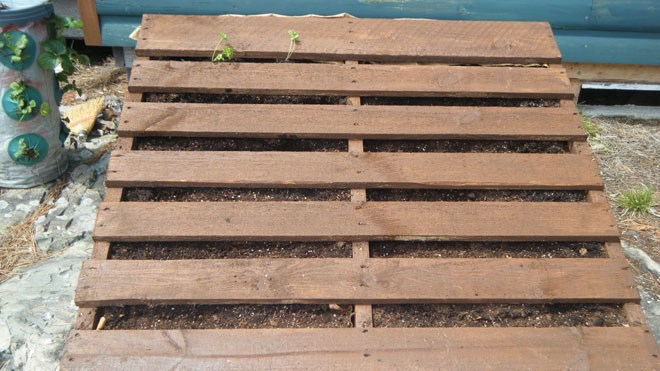It is not easy making a garden on bedrock. Other people complain of hard-packed clay or too much sand. It makes me jealous. Try digging directly into the Canadian Shield.
Nonetheless, I have been gardening for a very long time. Mostly for the joy of being outside, working with hope for treasures to come. Oh, the tomatoes we will enjoy.
Results have not always been great. I still have a lot to learn. I’ve been working mainly with container gardening for the past three years. Half-barrels, 2x6 planks nailed together and fancy garden planters are filled with local sand, silt, leaves and compost.
Last summer, a half-dozen squash vines volunteered from the compost pile and spread merrily across the field bed. The chipmunk enjoyed most of the tomatoes before they ripened. And I filled a berry-basket with the potatoes. Not a big basket. Potatoes have always been a challenge.
Ah, but I do not give up easily. This year, I half-emptied three of the barrels. I’m planting the potatoes there. As they grow, I’ll bury them. One with straw, one with chopped leaves and one with a mix of sand and compost. We’ll see. Maybe one of them will turn out like the pictures in the gardening books.
This year, I’m going to try a couple of new things. Ever heard of a pallet garden? I've included a photo of the one I built this year. There are lots of examples online. If you have a computer, it is a good idea to look around.
I learned that not all pallets are suitable for growing food. Depending on where the pallets are made and from where they are shipped, they have to be sterilized to prevent movement of bugs. Some are treated with chemicals, so they are not good for growing food. Some are heat-treated. They will have HT stamped on the side.
Perfect for any kind of garden.
I sanded the rough edges of my pallet, then painted the wood with a water-based stain. When it was dry, I covered the back side with landscape cloth and the bottom with plastic (from a peat moss bag) to keep the water from just running out.
I mixed about equal amounts black earth, cow manure and peat moss with a large bag of vermiculite in the wheelbarrow. Then I filled the pallet and watered it well while it was still lying down.
It doesn’t look like much right now, but on June 1 it will be fully planted with seedlings. Then, after everything settles in for a few days, I’m going to lift the pallet and lean it against the house.
I have a few days to figure out what sort of plants will like growing in such a space. Herbs for sure, maybe some beans at the edges? I can train them to climb the wall of the house. I will also be looking for ideas at the Seedling Swap at Eat Local Sudbury on May 31. It is an easy walk from there to the Gardening Show at the YMCA to get even more plants — and more ideas.
Another gardening season is here, where hope springs — or grows — eternal.
Viki Mather has been commenting for Northern Life on the natural world and life in Greater Sudbury since the spring of 1984.
Join Sudbury.com+
- Messages
- Post a Listing
- Your Listings
- Your Profile
- Your Subscriptions
- Your Likes
- Your Business
- Support Local News
- Payment History
Sudbury.com+ members
Already a +member?
Not a +member?
Sign up for a Sudbury.com+ account for instant access to upcoming contests, local offers, auctions and so much more.
